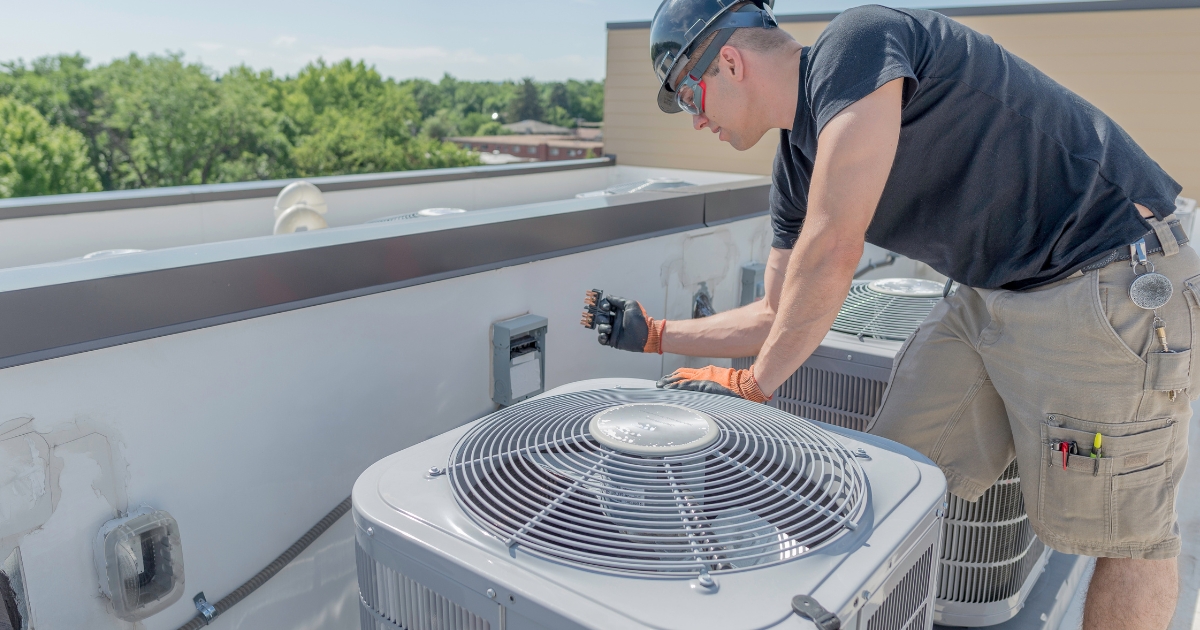HVAC Solutions for Historic Homes
When it comes to HVAC options for old houses, homeowners often face several unique challenges. These include accommodating existing architectural features, dealing with outdated or absent ductwork, and navigating space limitations. Fortunately, modern HVAC solutions can make historic homes comfortable without compromising their charm or structural integrity.
Quick Answers for HVAC in Old Houses:
- Ductless Mini Splits: Ideal for homes without existing ductwork.
- High-Velocity HVAC: Uses small ducts to preserve architectural features.
- Radiator Heating Upgrades: Efficiently update old radiator systems.
- Portable and Window Units: Cost-effective and non-invasive alternatives.
Many old house enthusiasts initially fall for the charm but quickly realize that upgrading to a modern HVAC system is essential for comfort. Whether it’s restoring old ductwork, installing high-velocity mini-ducts, or opting for ductless mini splits, there are numerous ways to modernize HVAC systems in historic homes.
Ready to dive deeper? Continue reading to explore the best HVAC solutions custom for old houses.
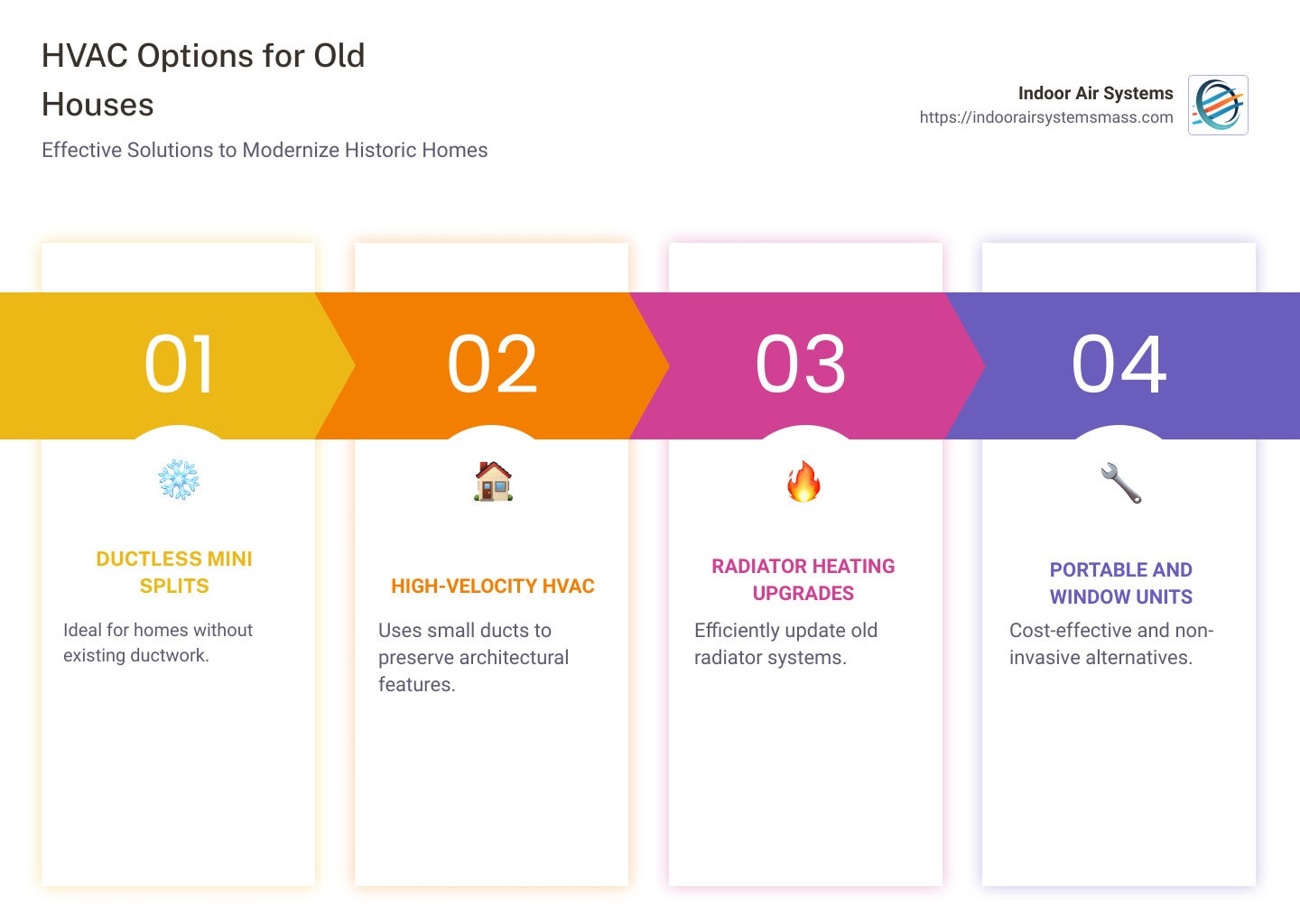
Table of Contents
Understanding the Challenges
Ductwork
One of the biggest problems in upgrading the HVAC system in an old house is the ductwork. Many historic homes either lack ductwork entirely or have outdated systems that can’t handle modern HVAC demands.
Old Ductwork: If your house has existing ductwork, it might be possible to rehabilitate it. However, older ducts are often too small or deteriorated to work efficiently with contemporary HVAC systems. An HVAC consultant can assess whether your current ductwork can be upgraded or if it needs a complete overhaul.
No Ductwork: For homes without any existing ductwork, installing a traditional duct system can be invasive and costly. Traditional central air systems can be expensive and invasive to install in homes without existing ductwork, making alternatives like ductless mini splits more appealing. This often involves tearing down walls and ceilings, which can compromise the architectural integrity of your beautiful old home.
Space Limitations
Old houses often come with unique space constraints that make modern HVAC installation tricky.
Attics and Basements: These areas were not designed to accommodate large HVAC units or extensive ductwork. High-velocity HVAC systems, which use smaller, flexible ducts, or ductless mini splits, which require no ducts, can be excellent solutions for these space limitations.
Living Areas: Even within living spaces, the layout and design of old homes can make it difficult to find suitable locations for HVAC equipment. Ductless mini split systems are advantageous here as they require only a small wall-mounted unit, making them less obtrusive. However, ductless mini splits require a sizable wall for mounting the indoor unit, so homeowners should evaluate available space for installation.
Architectural Integrity
One of the main attractions of old homes is their unique architectural features. However, these can pose significant challenges when installing modern HVAC systems.
Preservation: High-velocity systems and ductless mini splits are less invasive, helping to preserve the architectural integrity of your home. High-velocity systems use mini-ducts that can be snaked through walls and ceilings, while ductless mini splits require only small holes for refrigerant lines.
Aesthetic Concerns: While installing new HVAC systems, it’s crucial to consider the visual impact. Modern systems like ductless mini splits have sleek designs that can blend in with your home’s decor, minimizing aesthetic disruptions.
Installation Costs
Cost is always a factor when upgrading an HVAC system, especially in old homes where unexpected issues can arise.
Rehabilitation vs. Replacement: If you have existing ductwork, rehabilitating it might be more cost-effective than a complete replacement. However, the cost can still be significant if extensive repairs are needed.
System Choices: High-velocity systems and ductless mini splits generally have higher initial installation costs compared to traditional systems. However, they offer long-term savings through improved energy efficiency and lower maintenance costs. The costs involved to install central air in homes without existing ductwork can be significant, often leading homeowners to consider less invasive options like ductless mini splits.
Budget Management: It’s essential to get multiple quotes and consider potential rebates or tax credits. For example, energy-efficient systems like mini splits often qualify for rebates, helping to offset the initial investment.
HVAC Options for Old Houses
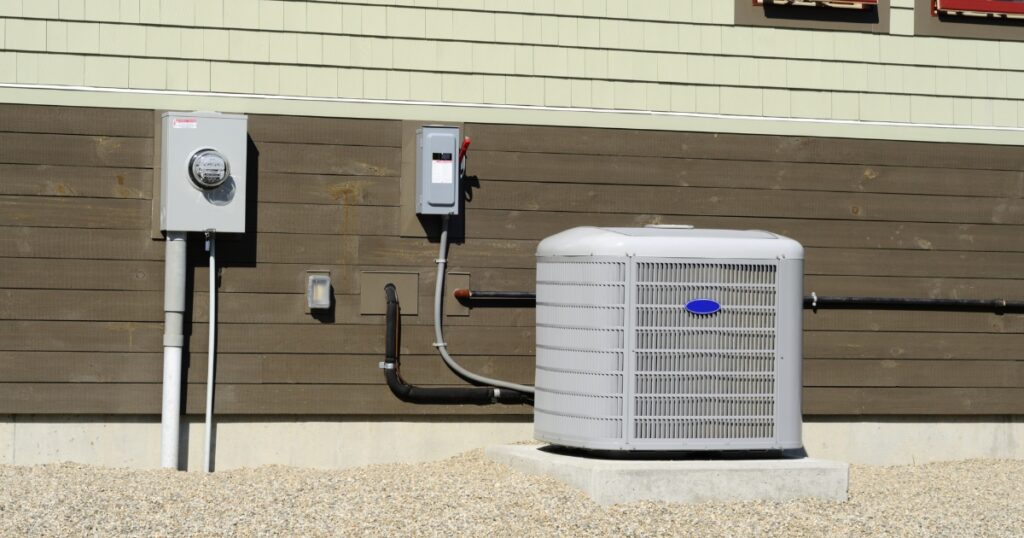
When it comes to choosing HVAC options for old houses, there are several modern solutions that cater to the unique challenges these homes present. Choosing the right air conditioning system depends on the specific layout and existing infrastructure of the home, with options like ductless mini splits and high-velocity systems being popular choices. Below, we explore some of the best systems available.
Ductless Mini Split Systems
Ductless mini splits are a popular choice for old homes without existing ductwork. These systems consist of an indoor air handler and an outdoor condenser/compressor.
Benefits include:
- Energy Efficiency: Mini splits are known for their high energy efficiency. They only condition the rooms in use, reducing energy waste.
- Ease of Installation: Installation is straightforward since no ductwork is required. This minimizes disruption to the home’s structure.
- Cost-Effective: Although the initial cost can be high, mini splits save money in the long run through lower energy bills and maintenance costs.
- Flexible Temperature Control: A ductless air conditioning system consists of an outdoor condenser unit and multiple indoor units, providing flexible temperature control and eliminating the need for ductwork.
Case Study: A homeowner in the Northeast installed mini splits in their 1950s home. They reported a significant reduction in their summer electric bills and improved comfort levels.
High-Velocity Systems
High-velocity systems are another excellent option, especially for homes with limited space for traditional ductwork. These systems use small, flexible ducts that can be easily routed through existing walls and ceilings.
Benefits include:
- Small Ducts: The 2-inch ducts are less invasive and easier to install in older homes.
- Minimal Disruption: Installation is less disruptive compared to traditional systems, preserving the home’s architectural integrity. A high velocity system uses smaller and more flexible ducts, minimizing damage during installation and preserving the architectural integrity of older homes.
- Architectural Preservation: High-velocity systems are ideal for maintaining the charm and character of historic homes.
Fact: High-velocity systems can fit in almost any home, from restored barns to city rowhomes, making them incredibly versatile.
Variable Refrigerant Flow (VRF) Systems
VRF systems offer a flexible and efficient solution for old homes. These systems use refrigerant lines to provide zoned cooling and heating.
Benefits include:
- Zoned Cooling: VRF systems allow for precise temperature control in different areas of the home.
- Efficiency: They are highly efficient, as they adjust the amount of refrigerant sent to each zone based on the current needs.
- Refrigerant Lines: The small size of refrigerant lines makes them easier to install in homes with limited space.
- Ductless Air Conditioning: Ductless air conditioning systems like VRF offer efficient and flexible temperature control, making them suitable for older homes with limited space for traditional ductwork.
Quote: “VRF systems are a happy medium for those who want both centralized control and the ability to set up different temperature zones,” says an HVAC expert.
Radiator Heating Upgrades
If your old house has existing radiator heating, consider upgrading to a more efficient system.
Options include:
- New Boilers: Modern boilers are much more efficient than older models, providing better heating performance.
- Energy Efficiency: Upgraded radiator systems can significantly improve energy efficiency, reducing heating costs.
- HVAC Contractor: Always consult with an HVAC contractor to assess the feasibility and cost of upgrading your radiator system.
Tip: Upgrading your radiator heating can be a cost-effective way to improve your home’s comfort without installing a completely new system.
Portable and Window Units
For those looking for temporary or supplemental solutions, portable AC units and window units are viable options.
Benefits include:
- Temporary Solutions: These units are perfect for short-term cooling needs or for use in specific rooms.
- Cost-Effective: They are generally less expensive than installing a whole-house system.
- Flexibility: Portable and window units can be moved and installed with minimal effort.
- Energy Efficiency: Ductless air conditioners are energy-efficient and cost-effective solutions, providing room-specific temperature control without the need for ductwork.
Example: A homeowner used portable AC units to cool their home office during the day, reducing the need to cool the entire house.
By understanding these HVAC options, you can make an informed decision that balances comfort, cost, and preservation of your old home’s unique character. Next, let’s look at the key factors to consider when choosing the right HVAC system.
Key Factors to Consider
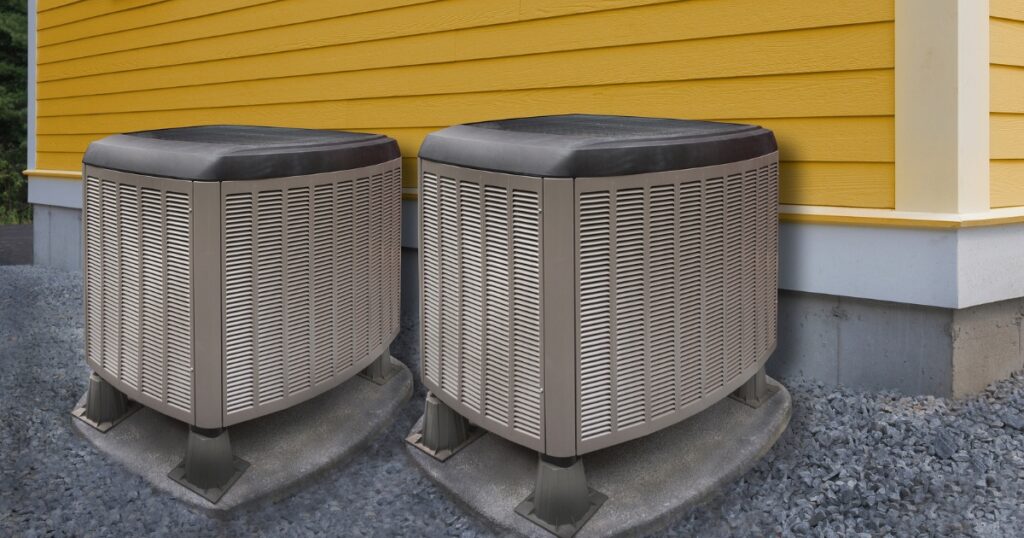
When choosing HVAC options for old houses, several factors come into play. Let’s break them down.
Space for Installation
Ductwork Space: Old houses often lack the space for traditional ductwork. Installing ducts can mean cutting into walls, ceilings, and floors, which can damage the architectural integrity.
Indoor Air Handler: High-velocity systems use smaller ducts and a compact air handler that can fit in attics, basements, or closets. This minimizes disruption to your home’s structure.
Wall-Mounted Units: Ductless mini-split systems require wall space for indoor units. If wall space is limited, consider ceiling cassettes or floor-mounted units.
Installation Cost
Cost Range: Installing high-velocity systems can cost between $20,000-$45,000. Ductless mini-splits, on the other hand, generally cost around $4,500 per room.
Budget Management: Ductless mini-splits allow you to install units in stages, spreading the cost over time. High-velocity systems, although more expensive upfront, can cool or heat the entire house efficiently.
Central System vs. Modular System
Centralized Air: High-velocity systems offer centralized air controlled by a thermostat in each zone. This is ideal if you prefer a set-and-forget approach.
Thermostat Control: With centralized systems, you can manage the temperature of the entire house from one or a few thermostats.
Energy Savings: Ductless mini-splits provide room-by-room temperature control, leading to significant energy savings. You only cool or heat the rooms you’re using.
Modular Systems: Modular systems like ductless mini-splits are excellent for creating different temperature zones in your home. This means more personalized comfort and energy efficiency.
Conclusion
Upgrading the HVAC system in an old house can be challenging, but with the right options and professional guidance, it is entirely possible. We’ve explored several HVAC options for old houses including ductless mini splits, high-velocity systems, VRF systems, radiator heating upgrades, and portable/window units. Each of these solutions offers unique benefits, from energy efficiency to minimal disruption of your home’s historic charm.
Indoor Air Systems specializes in providing custom HVAC solutions for homes in Central Massachusetts. With over 20 years of experience, we understand the unique challenges of retrofitting modern HVAC systems into older homes. Our team is dedicated to ensuring that your home remains comfortable year-round without compromising its architectural integrity.
Contact us today at Indoor Air Systems. We offer personalized attention to each project, ensuring that we find the best HVAC solution for your specific needs. Whether it’s installing a ductless mini split system for targeted cooling or upgrading an old radiator system to a more efficient boiler, we have the expertise to get the job done right.
For more information on our services and to schedule a consultation, visit our Air Conditioning Services page. Let us help you find the perfect HVAC solution for your historic home.
By choosing Indoor Air Systems, you can enjoy modern comfort while preserving the unique character of your old house. Contact us today to get started!
Frequently Asked Questions about HVAC Options for Old Houses
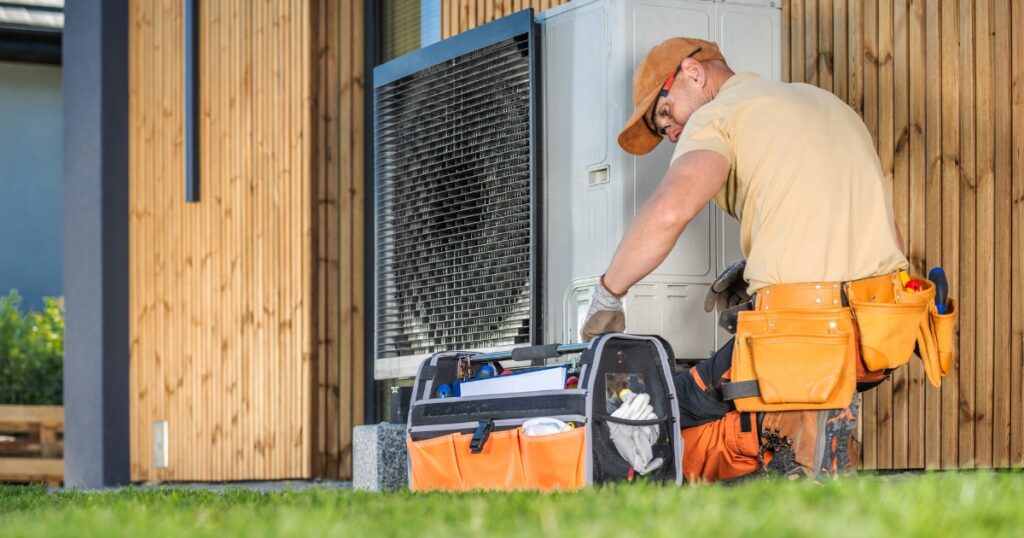
Can you install an HVAC system in an old house?
Yes, you can install an HVAC system in an old house. Retrofitting is a common approach, and there are several options to consider:
- Ductless Systems: These are ideal for homes without existing ductwork. Ductless mini splits are popular because they are easy to install and energy-efficient.
- High-Velocity Systems: These use smaller, flexible ducts that can be snaked through walls and ceilings, making them less invasive and preserving the architectural integrity of your home.
- Radiator Heating Upgrades: If your old house has radiators, you can upgrade to a more efficient boiler to improve heating without major renovations.
What is the most efficient way to heat and cool an old house?
The most efficient ways to heat and cool an old house often involve modern HVAC solutions:
- Heat Pumps: These systems can both heat and cool your home efficiently. Ductless mini splits are a type of heat pump and are known for their high energy efficiency.
- Mini Splits: These provide precise temperature control for individual rooms, reducing energy waste.
- High-Velocity Systems: These systems are compact and efficient, making them a good fit for older homes with limited space for ductwork.
How to get air conditioning in an old house?
Getting air conditioning in an old house can be straightforward with several effective options:
- Ductless Mini Splits: These are perfect if your home lacks ductwork. They are easy to install, energy-efficient, and provide both heating and cooling. Installing central air in older homes can be challenging due to the lack of existing ductwork, often leading homeowners to consider alternatives like ductless mini splits.
- High-Velocity Systems: These systems use small ducts, making them less intrusive and ideal for maintaining the aesthetics of an old house.
- Portable AC Units: These are a temporary and cost-effective solution. They don’t require installation and can be moved from room to room.
- Window Units: Another temporary solution, these are suitable for cooling specific rooms without the need for ductwork.
By understanding these frequently asked questions, you can better steer the HVAC options for your old house and choose the most suitable solution for your needs.
Our Content
At Indoor Air Systems, LLC, we provide specialized HVAC services with a personal touch. Serving Central Massachusetts, we focus on the installation and maintenance of mini-split systems, ensuring efficient and cost-effective heating and cooling solutions. Our locally owned and operated business allows us to offer exceptional customer attention and responsiveness without the high costs associated with larger companies. Choose Indoor Air Systems for reliable, expert service tailored to your specific needs.

